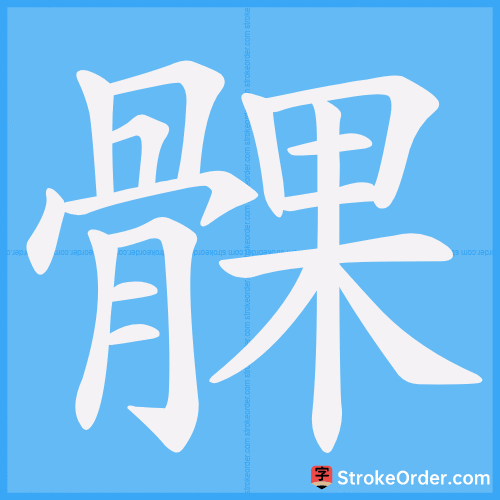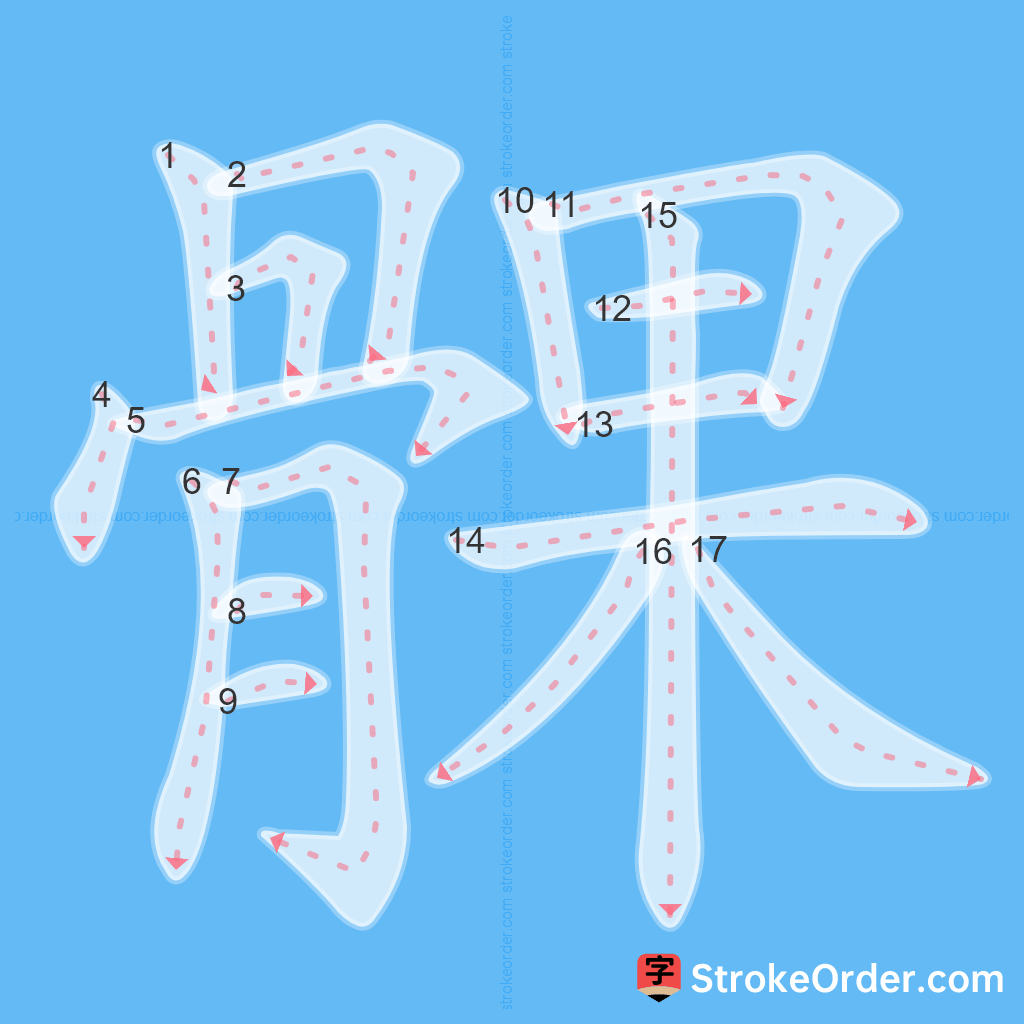髁 Stroke Order
Animated Stroke Order of 髁

Stroke Order Diagrams for 髁

Step-by-Step Handwriting Guide for 髁

Learn to Write Chinese Characters with Video Tutorials
Watch the video of writing the Chinese character "髁", learn the correct stroke order (笔顺) of the character "髁", and master the standard way of writing the character "髁".
Free Printable Handwriting Practice with Stroke Order: 髁
Printable Writing Practice Worksheet of "髁" in Portrait Orientation (Tian Zi Ge)

Printable Writing Practice Worksheet of "髁" in Landscape Orientation (Tian Zi Ge)

Information of 髁
Pinyin
kē
Radical
骨
Strokes
17 strokes
Usage
★★★★
Definition
condyles
髁 [kē]
1. A bony protrusion, often located at the two ends of a bone, specifically refers to the femur or kneecap.
骨头上的突起,多长在骨头的两端,亦指大腿骨或膝盖骨。
2. 股骨 (tighbone; femur)
股骨 ([En.] tighbone; femur)
3. 尾骨 (coccyx)
尾骨 ([En.] coccyx)
4. 踝骨. 也作“踝” (anklebone)
踝骨。也作“踝” ([En.] anklebone)
5. 膝骨. 也指膝部 (kneecap)
膝骨。也指膝部 ([En.] kneecap)
6. 膝端为髁,踵两旁圜骨为髁 (condyle)
膝端为髁,踵两旁圜骨为髁 ([En.] condyle)
Examples:
如:肱骨髁;股骨髁
For example: humeral condyle; femoral condyle
引例:
1. 《说文》:髁,髀骨也。 段玉裁注:“髀骨,犹言骰骨也。”
From "Shuowen": "髁 is the hip bone." Duan Yucai notes: "The hip bone is also known as the die bone."
2. 《一切经音义》引《三苍篇》:髁,尻骨。
From "Yiqie Jing Yiyi" citing "Sancang Pian": "髁 refers to the tailbone."
3. 清·纪昀《阅微草堂笔记》:群儿坌涌,各持砖瓦击其髁…次日,家人寻之归,两足青紫。
From Qing's Ji Yun's "Yuewei Caotang Notes": "A group of children surged, each holding bricks and tiles hitting their 髁… The next day, family members found him; both feet were bruised."
4. 《广韵》:髁,膝骨。
From "Guangyun": "髁 refers to the kneecap."
Input Method for 髁
Pinyin
ke1
Wubi
mejs
Cangjie
bbwd
Zhengma
lwkf
Four Corner
76294
Unicode
U+9ac1
Same Pronunciation Characters